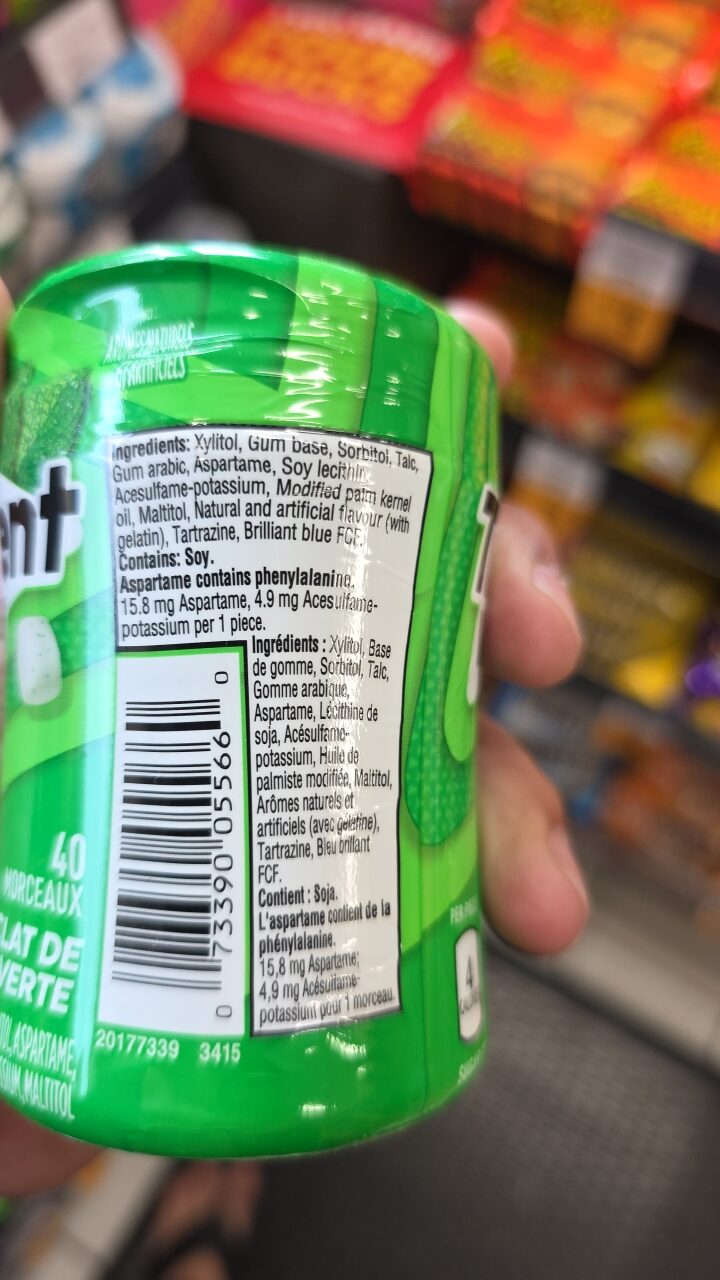
Barcode: 073390055660
flat de verte
DOUBTFUL
📝 Reason: The Halal status cannot be conclusively determined due to uncertain components. Additional manufacturer disclosure is needed for proper Islamic evaluation.
📄 Certificates: Contains: Soy., Aspartame Contains Phenylalanine., Contains: Soy., Aspartame Contains Phenylalanine.
Ingredients:
Details
Is Flat de Verte Halal? Let’s Find Out
As the demand for Halal products grows, it’s essential for consumers to understand the Halal status of items they purchase, including candies like Flat de Verte. The key to this evaluation lies within its ingredients. This post will take a closer look at Flat de Verte’s composition and its implications on Halal dietary laws.
What Is Flat de Verte?
Flat de Verte is a confectionery product that includes a range of ingredients, some of which raise questions regarding their Halal compliance. While the overall Halal status is doubtful, knowing each component will provide clarity.
Halal Status Overview
The Halal status of Flat de Verte is considered “doubtful”. This uncertainty stems from the use of certain ingredients, particularly those containing gelatin. The presence of gelatin is concerning for Muslims as it is often derived from non-Halal sources unless specified otherwise by the manufacturer. Proper Islamic evaluation requires more disclosure from the producer regarding the origin of these components.
Ingredient Breakdown
The ingredients in Flat de Verte include:
- Xylitol (E967): Generally regarded as permissible in Islam. Used as a sweetener.
- Gum Base: Permissible in Islam, it serves as the foundation for chewing gums.
- Sorbitol (E420): Classified as permissible as it acts as a thickener and a gelling agent.
- Talc: Considered permissible, often used as an anti-caking agent.
- Gum Arabic: Also permissible, it acts as a stabilizer.
- Aspartame: An artificial sweetener deemed permissible in Islam.
- Soy Lecithin: Seen as Halal, it serves as an emulsifier.
- Acesulfame-Potassium: Another sweetener that is Halal compliant.
- Modified Palm Kernel Oil: Permissible, this oil is often used in food products.
- Maltitol (E965): A sweetener that is also considered permissible.
- Natural and Artificial Flavor (with Gelatin): This is a key concern since it may include gelatin derived from non-Halal sources.
- Tartrazine: A food coloring that’s permissible in Halal diets.
- Brilliant Blue FCF (E133): Another food color that is acceptable.
- Phenylalanine: Generally permissible, but should be consumed with caution if allergic.
E-Numbers and Their Status
Understanding the E-numbers can also clarify ingredient safety:
- E967 (Xylitol): Safe as a sweetener.
- E420 (Sorbitol): Confirmed for use in Halal products.
- E965 (Maltitol): Safe for consumption.
- E133 (Brilliant Blue FCF): Used in compliance with Halal standards.
Final Thoughts on Flat de Verte
While many components of Flat de Verte are permissible, the uncertainty surrounding the gelatin in its flavoring raises a flag for those following a strict Halal diet. As consumers, it is crucial to consult with manufacturers regarding the sourcing and Halal certifications of their products. Until there is more transparency regarding the ingredients, particularly the natural and artificial flavors, the Halal status of Flat de Verte remains questionable.
In conclusion, always check for Halal certification or contact the manufacturer directly to ensure that all components align with your dietary needs and beliefs. Awareness and thorough investigation is key in making informed dietary choices.
